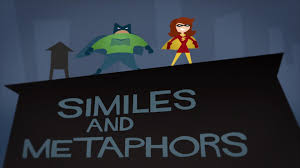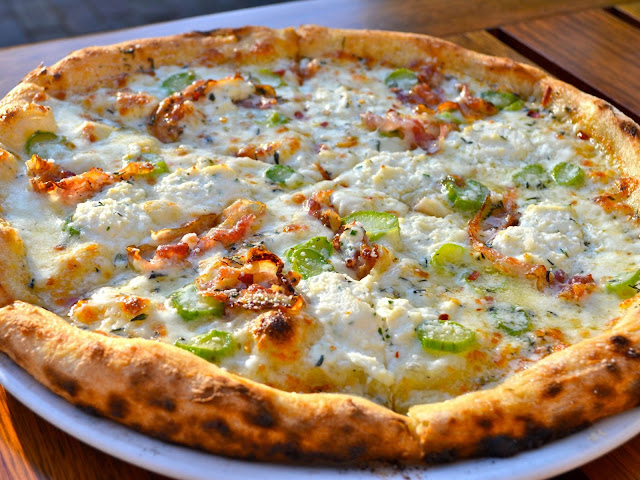Appaloosa - The Most Beautiful Horse Breed in the World
The breed backpedals to the late seventeenth century, toward the northwestern corner of North America and particularly to the huge territory that secured what is currently part of the conditions of Oregon, Washington, Idaho, and Montana. This was the land possessed by the Nez Percé American Indians, and it is to their ground breaking horsemanship and rearing practices that the Appaloosa owes its prosperity.
In spite of the fact that the Nez Percé built up this spotted breed, the historical backdrop of spotted stallions is a long one, with pictures of seen steeds showing up in ancient European give in works of art from around 17,000 B.C.E. Seen steeds specifically the Austrian Noriker and the Danish Knabstrup - were to a great degree well known in Europe and were in awesome request from the sixteenth century to perform in the inexorably prevalent Riding Schools. A significant number of the consecrated Spanish stallions, as well, including the adored Andalusian, once displayed spotted coat colorings.
Stallions acquainted with the Americas by the Spanish conquistadores conveyed the intense spotted coat quality, which spread up into North America as the Spanish proceeded with their investigations. The Shoshone clan from southern Idaho wound up noticeably awesome steed merchants, and it was to a great extent from the Shoshone that the Nez Percé, whose region was more distant north and west, procured their supply of stallions. The Nez Percé's territory, with its ripe fields and protected territories, was profoundly appropriate for raising steeds, and the clan immediately settled a considerable reproducing stock. Dissimilar to a large number of the American Indian clans, the Nez Percé begin executing rearing projects to explicitly enhance their stallions. Just the best steeds were kept as stallions, though those of sub-par quality were gelded. The clan kept the best of its rearing stock and disposed of the poorer stallions through exchanging with different clans. The quantities of their stallions climbed quickly, and the Nez Percé turned into a prosperous clan in light of their tremendous supply of steeds. In the mid 1800s, the American traveler Meriwether Lewis (1774-1809) depicted the Nez Percé's stallions as "of a phenomenal race; they are carefully framed, dynamic, and tough."
Shading was an essential thought for the Nez Percé for ornamentation and embellishing purposes as well as for disguise. Be that as it may, their essential concern when reproducing was to build up an inside and out steed of awesome stamina, speed, and sturdiness, and one that could make due on scanty proportions. Their stallions wound up plainly prestigious for these qualities and were as fit for pulling a furrow as they were of covering gigantic separations at speed with a rider. The most prized of their stallions were utilized amid warring efforts and were quick, deft, and shrewd, and the most venerated of these were the spotted ones.
The spotted stallions having a place with the Nez Percé were depicted as Palouse steeds by white pilgrims, who took the name from the Palouse River that went through the Nez Percé region. Later the steed ended up noticeably known as "a Palouse," at that point as an Appalousey. The name Appaloosa was not given to the breed until the point when 1938 with the development of the Appaloosa Horse Club, set up to safeguard the breed. Somewhere in the range of fifty years previously this, nonetheless, the fearless, spotted breed was everything except wiped out amid the Nez Percé War battled between the American Indians and the U.S. government in 1877. The Nez Percé figured out how to outsmart and beat the U.S. rangers for over three months and crosswise over 1,300 miles (2,092 km) of slippery landscape, exclusively as a result of the backbone and continuance of their Appaloosa steeds. The Nez Percé were undefeated in fight however in the end surrendered to forestall encourage hardships to the general population attempting to climate the bone chilling Montana winter. The states of their surrender expressed that they be permitted to come back to their territories in the spring with their stallions, however rather they were sent to North Dakota and a significant number of their adored and prized creatures butchered. Some got away, and others were later gathered together by farmers and utilized or sold.
After this, a portion of the steeds that had survived were immediately scattered at sell off and gained by a couple of private people and farmers who perceived their inborn qualities and started to breed them. In 1937, the magazine Western Horseman distributed an article on the Appaloosa composed by Francis Haines, starting open enthusiasm for the breed. The next year, Claude Thompson, a raiser of the spotted steeds, joined with a few others and set up the Appaloosa Horse Club to safeguard and advance the stallions. By 1947, there were two hundred enrolled steeds and a hundred individuals. Only three decades later, under the administration of George Hatley, the club had a marvelous figure of more than 300,000 stallions enrolled, making it the third-biggest light-horse breed registry. Amid this recovery of the Appaloosa there was some presentation of Arabian blood and impressive impact from the Quarter Horse, which can be found in the solid edge of the cutting edge Appaloosa.
In spite of the fact that the Nez Percé built up this spotted breed, the historical backdrop of spotted stallions is a long one, with pictures of seen steeds showing up in ancient European give in works of art from around 17,000 B.C.E. Seen steeds specifically the Austrian Noriker and the Danish Knabstrup - were to a great degree well known in Europe and were in awesome request from the sixteenth century to perform in the inexorably prevalent Riding Schools. A significant number of the consecrated Spanish stallions, as well, including the adored Andalusian, once displayed spotted coat colorings.
Stallions acquainted with the Americas by the Spanish conquistadores conveyed the intense spotted coat quality, which spread up into North America as the Spanish proceeded with their investigations. The Shoshone clan from southern Idaho wound up noticeably awesome steed merchants, and it was to a great extent from the Shoshone that the Nez Percé, whose region was more distant north and west, procured their supply of stallions. The Nez Percé's territory, with its ripe fields and protected territories, was profoundly appropriate for raising steeds, and the clan immediately settled a considerable reproducing stock. Dissimilar to a large number of the American Indian clans, the Nez Percé begin executing rearing projects to explicitly enhance their stallions. Just the best steeds were kept as stallions, though those of sub-par quality were gelded. The clan kept the best of its rearing stock and disposed of the poorer stallions through exchanging with different clans. The quantities of their stallions climbed quickly, and the Nez Percé turned into a prosperous clan in light of their tremendous supply of steeds. In the mid 1800s, the American traveler Meriwether Lewis (1774-1809) depicted the Nez Percé's stallions as "of a phenomenal race; they are carefully framed, dynamic, and tough."
Shading was an essential thought for the Nez Percé for ornamentation and embellishing purposes as well as for disguise. Be that as it may, their essential concern when reproducing was to build up an inside and out steed of awesome stamina, speed, and sturdiness, and one that could make due on scanty proportions. Their stallions wound up plainly prestigious for these qualities and were as fit for pulling a furrow as they were of covering gigantic separations at speed with a rider. The most prized of their stallions were utilized amid warring efforts and were quick, deft, and shrewd, and the most venerated of these were the spotted ones.
The spotted stallions having a place with the Nez Percé were depicted as Palouse steeds by white pilgrims, who took the name from the Palouse River that went through the Nez Percé region. Later the steed ended up noticeably known as "a Palouse," at that point as an Appalousey. The name Appaloosa was not given to the breed until the point when 1938 with the development of the Appaloosa Horse Club, set up to safeguard the breed. Somewhere in the range of fifty years previously this, nonetheless, the fearless, spotted breed was everything except wiped out amid the Nez Percé War battled between the American Indians and the U.S. government in 1877. The Nez Percé figured out how to outsmart and beat the U.S. rangers for over three months and crosswise over 1,300 miles (2,092 km) of slippery landscape, exclusively as a result of the backbone and continuance of their Appaloosa steeds. The Nez Percé were undefeated in fight however in the end surrendered to forestall encourage hardships to the general population attempting to climate the bone chilling Montana winter. The states of their surrender expressed that they be permitted to come back to their territories in the spring with their stallions, however rather they were sent to North Dakota and a significant number of their adored and prized creatures butchered. Some got away, and others were later gathered together by farmers and utilized or sold.
After this, a portion of the steeds that had survived were immediately scattered at sell off and gained by a couple of private people and farmers who perceived their inborn qualities and started to breed them. In 1937, the magazine Western Horseman distributed an article on the Appaloosa composed by Francis Haines, starting open enthusiasm for the breed. The next year, Claude Thompson, a raiser of the spotted steeds, joined with a few others and set up the Appaloosa Horse Club to safeguard and advance the stallions. By 1947, there were two hundred enrolled steeds and a hundred individuals. Only three decades later, under the administration of George Hatley, the club had a marvelous figure of more than 300,000 stallions enrolled, making it the third-biggest light-horse breed registry. Amid this recovery of the Appaloosa there was some presentation of Arabian blood and impressive impact from the Quarter Horse, which can be found in the solid edge of the cutting edge Appaloosa.




Comments
Post a Comment